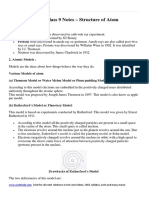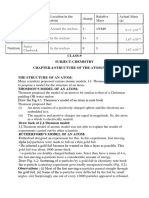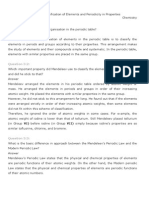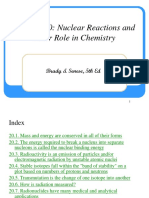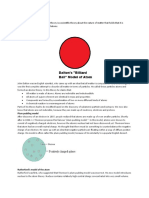0% found this document useful (0 votes)
17 views3 pagesStructure of Atom Notes
Atoms are composed of three fundamental particles: electrons, protons, and neutrons, with various atomic models proposed to explain their structure. Thomson's model depicted atoms as a sphere of positive charge with embedded electrons, while Rutherford's model introduced a nucleus with electrons in circular orbits, though it had drawbacks regarding atomic stability. Bohr's model improved upon this by suggesting electrons occupy specific energy levels without losing energy, and concepts like valency, atomic number, and isotopes are also discussed.
Uploaded by
amit3653536Copyright
© © All Rights Reserved
We take content rights seriously. If you suspect this is your content, claim it here.
Available Formats
Download as PDF, TXT or read online on Scribd
0% found this document useful (0 votes)
17 views3 pagesStructure of Atom Notes
Atoms are composed of three fundamental particles: electrons, protons, and neutrons, with various atomic models proposed to explain their structure. Thomson's model depicted atoms as a sphere of positive charge with embedded electrons, while Rutherford's model introduced a nucleus with electrons in circular orbits, though it had drawbacks regarding atomic stability. Bohr's model improved upon this by suggesting electrons occupy specific energy levels without losing energy, and concepts like valency, atomic number, and isotopes are also discussed.
Uploaded by
amit3653536Copyright
© © All Rights Reserved
We take content rights seriously. If you suspect this is your content, claim it here.
Available Formats
Download as PDF, TXT or read online on Scribd
/ 3






















































